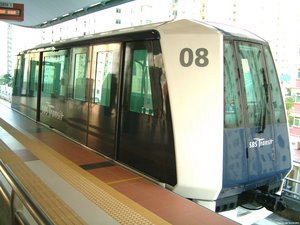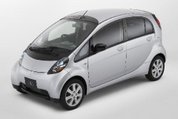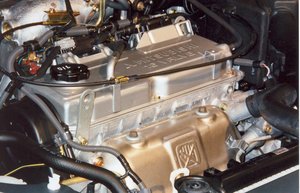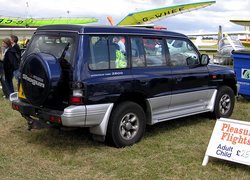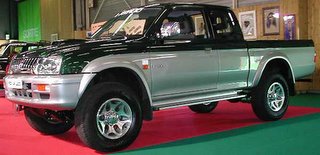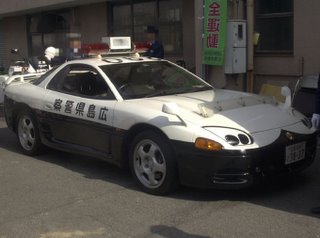Mitsubishi Galant

The Mitsubishi Galant is a midsize automobile manufactured by the Mitsubishi Motors Corporation.
1969
The Mitsubishi Galant was launched in 1969 as a two and four-door sedan, sold in some markets as the Colt Galant. It featured a choice of 1.3 or 1.5 L four-cylinder engines. It was sold in the United States as the Dodge Colt from 1971.
From 1970, a fastback coupé model, the Hardtop, was added. It was the first Japanese production passenger car without side pillars. The same year saw the release of the most powerful first-generation model, the GTO, with a 1.6 L, 125 PS engine.
1973
The second-generation Galant—in sedan and GTO forms—was more widely exported and was sold in Australia as the Chrysler Valiant Galant and in Europe as the Colt Galant. This model was more curvaceous, influenced by coke-bottle styling, and featured a larger, 1850 cc engine, as well as a new 2.0 'Astron' unit developing 125 PS. It was also offered as the Dodge Colt in the US.
1976
The third-generation Galant, dating from 1976, was divided into two models: the Galant Sigma (for the sedan and wagon) and the Galant Lambda (the coupe). The former was sold in many markets as the Mitsubishi Galant (without the word 'Sigma') and in Australia as the Chrysler Sigma (until 1980, after which it became the Mitsubishi Sigma). Strangely, in New Zealand it was badged as 'Galant Sigma' but colloquially referred to as the 'Sigma', a name it formally adopted after 1980.
Sapporo
The coupé was sold in Europe as the Mitsubishi Sapporo, in Australia as the Chrysler (and later Mitsubishi) Sigma Scorpion, and in the United States as the Plymouth Sapporo and Dodge Challenger from 1978 to 1983. On the Japanese home market, the car was known as the Mitsubishi Lambda. Initially available with Mitsubishi's Astron engine, the larger 2.6 L 4-cylinder engine was made a later option. Four-wheel disc brakes were standard.
1980
A substantial facelift took place in 1980, though the rear end of the wagon was retained. Mitsubishi officially considers this a new generation Galant. It was Car of the Year in New Zealand in 1981. Production of the wagon model continued in Australia till 1987, when the Magna wagon came on stream.
Lonsdale
From 1982 to 1983, some of the Australian Sigmas were exported to the United Kingdom with the Lonsdale badge, circumventing the voluntary 11 per cent market restriction adopted by Japanese manufacturers. The car was unsuccessful. For its final year, 1983 to 1984, it carried Mitsubishi Sigma badges in the UK before meeting its demise.
1983
A long-lived fifth-generation model shifted to front-wheel drive for the 1984 model year as a four-door sedan. This formed the basis of the widened Mitsubishi Magna in Australia for 1985, the same year in which Mitsubishi won the Golden Steering Wheel in Germany for the Galant and Wheels’ Car of the Year for the Magna. In 1988, the standard Galant was re-released in the New Zealand market as the V3000 with a 3.0 L V6 engine and continued alongside the sixth-generation Galant for many years.
1987
In 1987, the same platform was used for a sixth-generation model which adopted taller, rounded styling. This generation won Japanese Car of the Year in 1987 and the GS model became Motor Trend Import Car of the Year in 1989.
The Sigma designation disappeared but a new hardtop liftback model was added in 1988, called the Galant Eterna.
This generation was also sold in Canada as Dodge 2000GTX and Eagle 2000GTX.
VR-4
The four wheel drive, four wheel-steer 1988 Galant VR-4 (E39A) was a respected competitor in the World Rally Championship and the engine from this car, the 4G63 engine was carried over to the Mitsubishi Lancer Evolution series of winning rally cars. The current VR-4 model still retains the four wheel drive layout and high-revving engine and is considered by many to be a serious sports sedan.
1992
1992 Mitsubishi Galant
Enlarge
1992 Mitsubishi Galant
A new-model Galant débuted in 1992, available as a four-door sedan and five-door liftback (Eterna). A Japan-only hardtop model, the Emeraude, was launched in 1992, too.
1996
The eighth-generation 1996 model continued the 1992 design themes but a station wagon (known in Japan as the Legnum) was added. The liftback was deleted. This model won the 1996–7 Japanese Car of the Year award. Despite it being superseded in the US from 2003, it remains on sale in numerous countries, including Japan itself as of May 2005. This arguably makes it one of the longest-running passenger cars currently on sale in Japan, with the exception of luxury models such as the Toyota Century. The Legnum wagon (which has recently ceased production) was a popular car with tuners.
2003
The United States has had the sedan-only ninth-generation PS platform model since 2003, announced at the New York International Auto Show in April of that year, for the 2004 model year. Other markets did not see it till much later. One of the first markets outside North America to get it was the Republic of China, which launched the Galant Grunder in December 2004, with a (so far) unique front end. All new Galant engines come with new GDI or gasoline direct injection engines. Mitsubishi was the first car manufacturer to commercially use the GDI or stratified charge engine.
Near future
A 2000 Mitsubishi Galant ES
Enlarge
A 2000 Mitsubishi Galant ES
It became apparent that the non-American Galants will get a front end that resembles that of the Lancer and Diamante. The new front end was designed by its former design chief Olivier Boulay. It is equipped with a 2·4 L engine producing 162 bhp.
The Middle East and eastern Europe will likely source its Galants from the United States from 2006.
In Australia, starting in the 2006 model year, Mitsubishi are selling a modified version of the North American Galant as the 380, denoting its 3.8 L engine. The 380 is a successor to the Magna and the Verada large cars that also formed the basis for the North American Diamante. The 380 is a crucial car for Mitsubishi because this is the car that will determine the future of Mitsubishi's Australian manufacturing operations. However, sales have been poor and within 3 months of introducing the model in Australia, Mitsubishi Australia have announced that production will be decreased and 250 staff at its factory are being laid off. This is 15% of the factory staff.
United States production
1996 Mitsubishi Galant ES (7th-Generation US Model)
Enlarge
1996 Mitsubishi Galant ES (7th-Generation US Model)
In the United States, the Galant, along with the Mitsubishi Eclipse and the Eagle Talon and Plymouth Laser (the later two now discontinued), was one of the vehicles built by Diamond Star Motors, a joint venture between Chrysler (now DaimlerChrysler) and Mitsubishi, in Normal, Illinois. The plant has been wholly-owned by Mitsubishi since 1991.
The seventh-generation Galant's production was shifted to Normal, Illinois. The very first seventh-generation US-made 1994 Galant rolled off the assembly line on May 24, 1993. The eighth generation went into production there on July 7, 1998. The 2004 Galant began production on October 15, 2003.
Due to excess capacity at the plant, Mitsubishi will export Galants in 2006 to markets in the Middle East and eastern Europe. There had been a layoff at the plant in late 2004, and Mitsubishi hopes to utilize its capacity and rehire its former employees as soon as possible.
